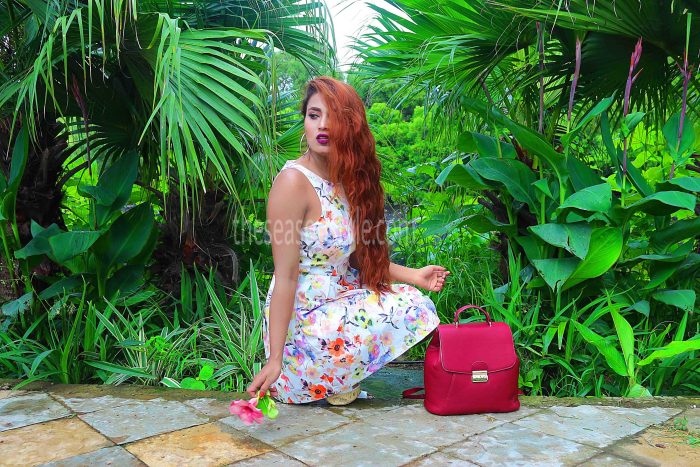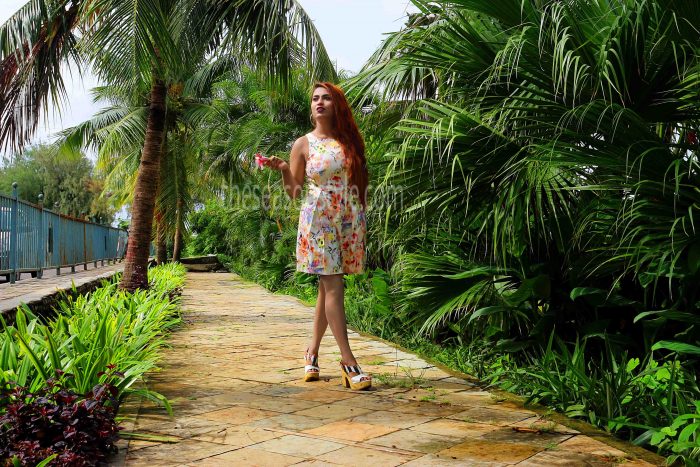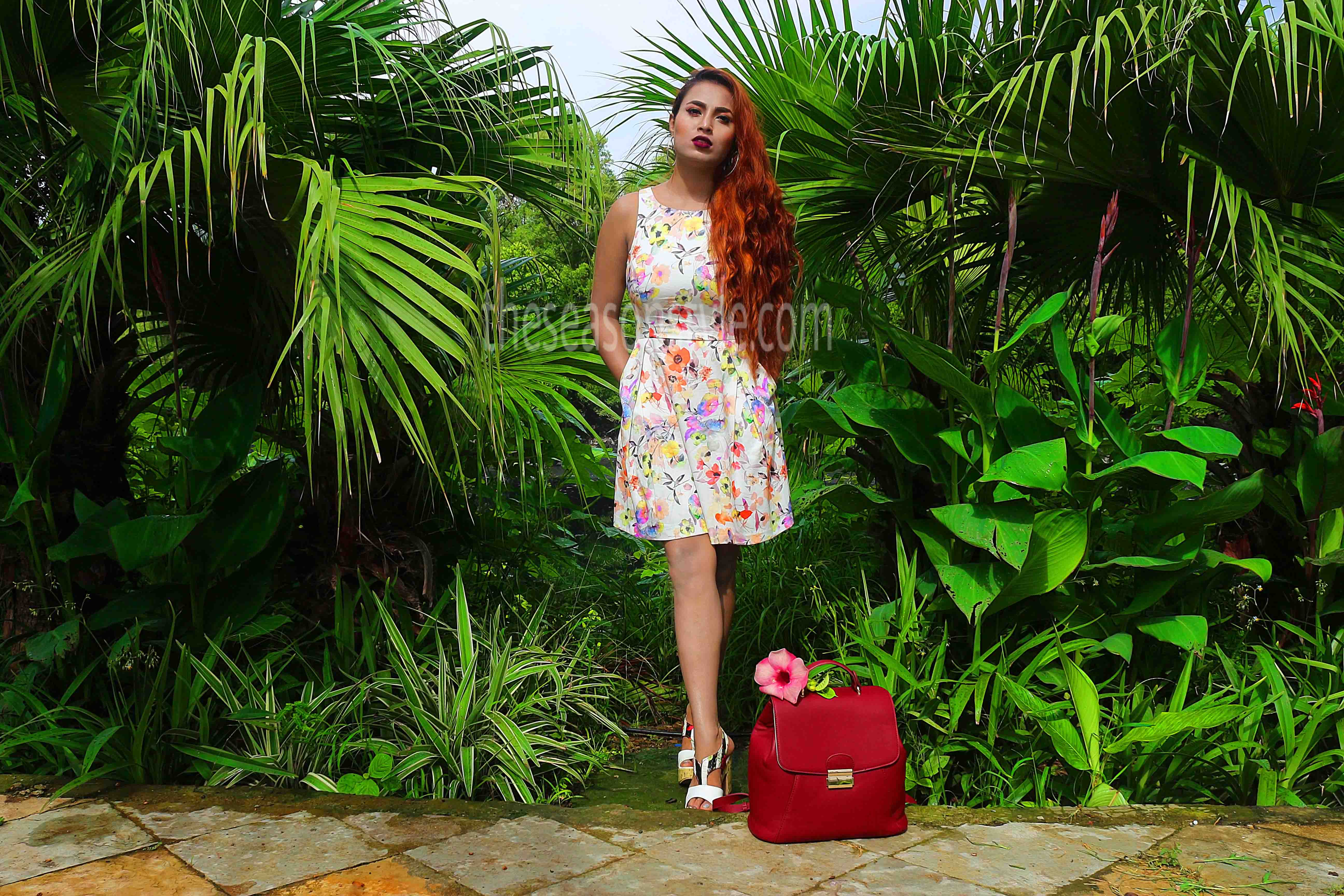HEY THERE,

When you think of printed fabrics, what pops into your head? Right now, we’ve got floral patterns on our mind, which isn’t surprising considering floral are perhaps the one of the most ubiquitous motifs in fashion. Inherently beautiful, and available in a million different colors, textures, and styles, most of us likely have at least one floral dress or shirt hanging in the closet.
Long ago, flowers held deep meaning and symbolism, which people wished to imbue into their clothing. In addition to being a universal symbol of femininity, a “language of flowers” was prevalent in different cultures and time periods, and allowed for diversity in the design of patterns.

The origin of the floral fabric can be found in Asia, where flowers are an integral part of the culture.
Floral Fabrics in Japan
In Japan, the chrysanthemum featured heavily in textile motifs, particularly in kimono fabrics. It’s naturally long, slender petals radiated similar to the sun’s rays, and so the flower became synonymous with the sun, as well as a symbol of the royal family.
Floral Fabrics in China
In China, flowers were woven into stunning, brightly colored brocades or created in detailed embroideries. Symbolic imagery featured heavily in Chinese textiles, the aesthetic being bold and bright.
The famous lotus flower was another common motif. An important symbol in Buddhism, this particular flower represented purity, as it rises from the mud to bloom. Incidentally, Classic Ottoman textiles were partly inspired by the Chinese aesthetic. These fabrics were characterized by stylized floral repeat patterns, often in heavy woven velvets. Motifs included, carnations, fruit and of course, peonies.

Floral Fabrics in India
India is also home to a rich history of not only textiles, but also ornate and dazzling floral designs. With this in mind, it is unsurprising that European traders were eager to bring these rich and beautiful pieces back with them.
The fabric that is perhaps most responsible for bridging the gap between the east and west in terms of floral is chintz.
You might also recall chintz’s popularity in 17th century European or American fashions. However, prior to its appropriation into western culture, chintz was a stunning handmade textile primarily used in Indian home decor.
In the original production process, the entirety of the plain cotton fabric would be coated in wax, with the exception of the floral motif that had been drawn on. The fabric would then be dipped in various natural dye baths, including indigo and madder. Once washed and dried, areas requiring yellow or green would be hand-painted with saffron.
Floral Fabrics in Europe
By the 1400’s and 1500’s, florals began to spread globally as European traders started purchasing the extremely ornate and detailed fabrics. Italy frequently traded in textiles with the Ottoman Empire, and the gorgeous velvet florals became a coveted design in Italian cities. As for chintz, Dutch and British merchants brought the fabric to the west, where its popularity exploded.
The Season Style Tips

Let your Floral piece stand out by pairing it with an all neutral outfit. For example, if you have a pair of floral shorts matches them with a plain solid top and accessorize simply with bag and statement watch. If going for Floral top or shirt then keep lower simple and plain color.
You can also steal my look, a pastel floral dress pair them with floral wedges, hoop earrings and solid color bag. This is looking perfect to carry for every day look.

BRAND I AM WEARING
DRESS & BAG – FOREVER NEW INDIA
EARINGS – KOOVS
SHOES – SNAPDEAL
This all about Floral Pattern in PATTERN & STYLE, I hope this is educating enough about the prints. Keep styling and experimenting with pattern you can also tag me @jannatsorathia on Instagram.
Till then wear what is in THE SEASON STYLE.
Happy Shopping
Article written and model – Jannat Sorathia (founder of THE SEASON STYLE)
Tag on Instagram and follow – @jannatsorathia #theseasonstyle
Photographer – @framedaar
Related posts
Search
Categories
Archives
- June 2023 (3)
- February 2022 (1)
- December 2021 (1)
- March 2021 (1)
- October 2020 (1)
- December 2019 (1)
- November 2019 (1)
- October 2019 (1)
- August 2019 (1)
- July 2019 (1)
- June 2019 (1)
- May 2019 (1)
- April 2019 (2)
- March 2019 (2)
- February 2019 (1)
- January 2019 (1)
- December 2018 (1)
- November 2018 (3)
- October 2018 (2)
- September 2018 (4)
- August 2018 (3)
- July 2018 (2)
- June 2018 (6)
- May 2018 (3)
- April 2018 (4)
- March 2018 (5)
- February 2018 (5)
- January 2018 (4)
- December 2017 (6)
- November 2017 (6)
- October 2017 (6)
- September 2017 (3)
- August 2017 (5)
- July 2017 (5)
- June 2017 (9)
- May 2017 (9)
- April 2017 (7)
- March 2017 (9)
- January 2002 (1)
- April 2001 (1)
- July 2000 (1)

